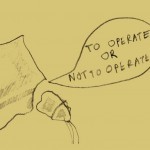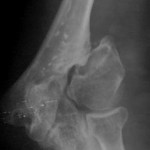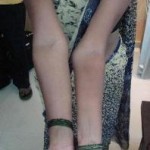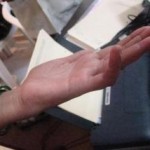Non Union Lateral condyle Fractures

The questions to ask
The patient factors
Know what the patient has come to you for
- What are the patient’s complains ?
- What are the parent’s expectations from the treatment?
3.How are the elbow movements and the function of the child?
The surgeon factors
Know what you are operating for
1.Is it that the xray shows the nonunion and you want to fix it
2.Is it the prominence of the fragment which parents find unsightly
- Are the movements restricted and you want to improve
- Is there deformity with/without tardy ulnar palsy
To operate or not to operate is the question
In most of the neglected lateral condyle fractures(more than 3 months post fracture) the function and range of movements are satisfactory and the post op result in my experience ands according to the literature, are functionally not superior to the child ‘s pre op status.
The results of open reduction and fixation in late presentations are not good
Quoting from Rockwood and Green’s fracture in children “Controversy exists as to whether elbow Funccion can be improved by a late open reduction and internal fixation of the fracture fragment. Delayed open reduction has been complicated by osteonecrosis and further loss of elbow motion. Speed and Macey were among the flrsr investigators to question whether patients treated with late surgery did better than those nor treated. In parients with malunion who were creared late, they found a high incidence of poor results due to “epiphyseal changes” that probably represented osteonecrosis. There have been many subsequent reports of osteonecrosis occurring after late open reduction. The high incidence of osteonecrosis of the fragment is believed to be due to the extensive sofr tissue dissection necessaty to replace the Fragment. ”
The results of non operative treatment are good
Patients wjth established nonunion lose some range of motion bur still function well. Smith reported an 85-year follow-up of a patient with a nonunion, cubirus valgus, and mild ulnar neuropathy. Despite these complications, the patienr was a musician, playing the French horn for over 35 years. Kalenak reported a similar 50-year follow-up of nonunion of the lateral condyle in a 74-year-old laborer who had minimal symproms. Other than rhe secondary effecrs of a rardy ulnar nerve palsy, the functional difficulties caused by an established nonunion are not severe .
This has led many investigators to recommend no treatment at all or no treatmenr until the patient has achieved full skeletal growth for an established nonunion elbow deformity.
My protocol for the late presentations of lateral condyle fractures
- L ess than 3 weeks: behaves similar to fresh fracture Treatment OR and fixation
- Late presentation more than 3 weeks and less than 3 months:still worth trying osteosynthesis Treatment ORIF with grafting
- Late presentations bet 3 mt – 6 mths:grey zone depends if the fragment is mobile and how is the child functionally Treatment Observation or Surgery
- Late presentations after 6 months:
- Good function No deformity No instability Treatment Observation only
- Good range but instability Treatment Fix in situ and graft
- Valgus deformity without ulnar neuropathy/early neuropathy Osteotomy (percutaneous angulation displacement fixed with exfix
4 Valgus deformity with neuropathy Osteotomy with neurolysis
5 Valgus deformity with instability with large mobile fragment Osteotomy with fixation of fragment in situ
6 Stiff elbow with nonunion Elbow Arthrolysis with fixation and grafting
Case Discussion
45 year old with untreated lateral condyle fracture sustained at age of 8 years. Has good function and elbow range of 30-120. Early clawing suggestive of ulnar neuropathy since 6 months.
Please mail treatment options


